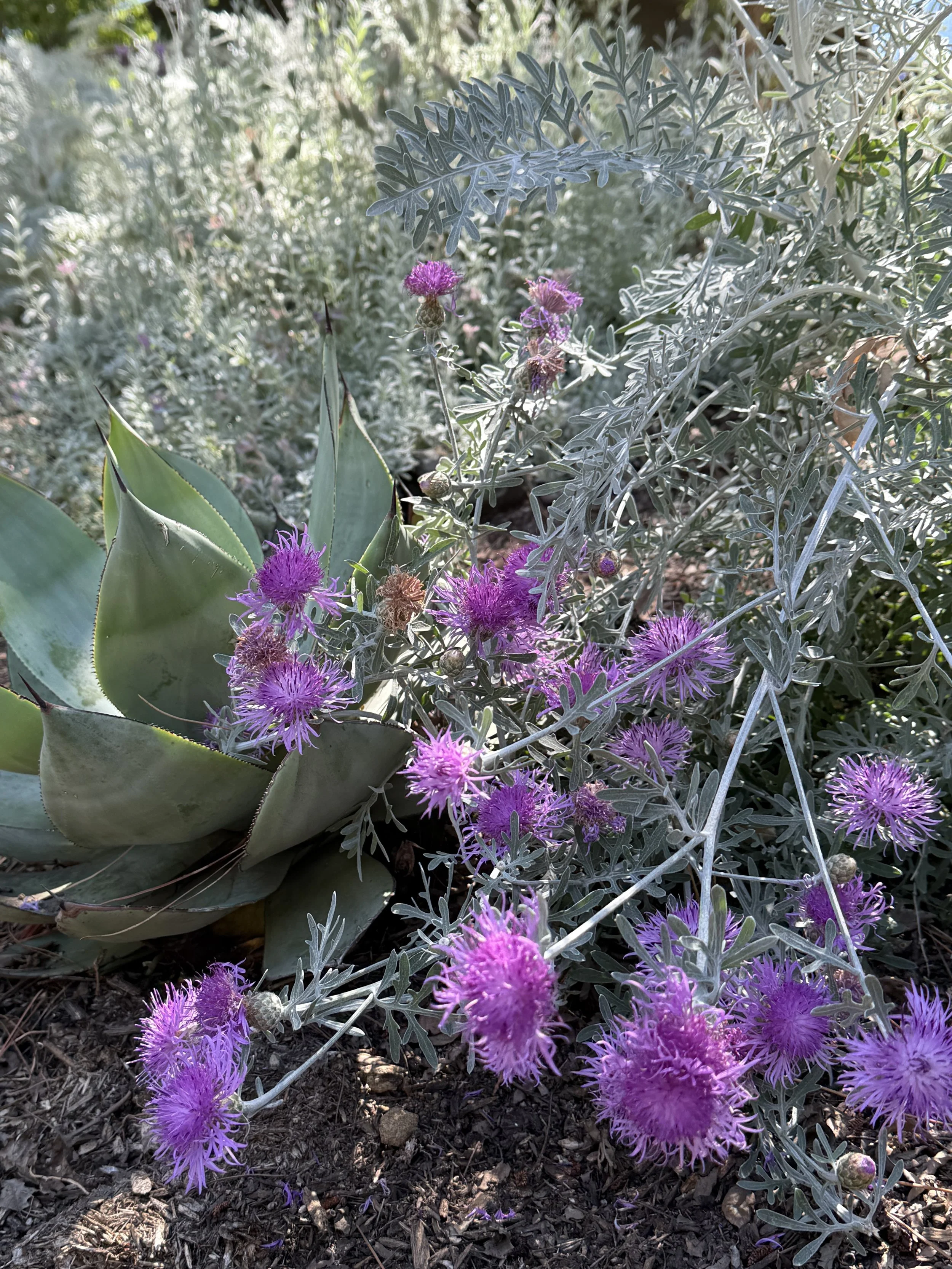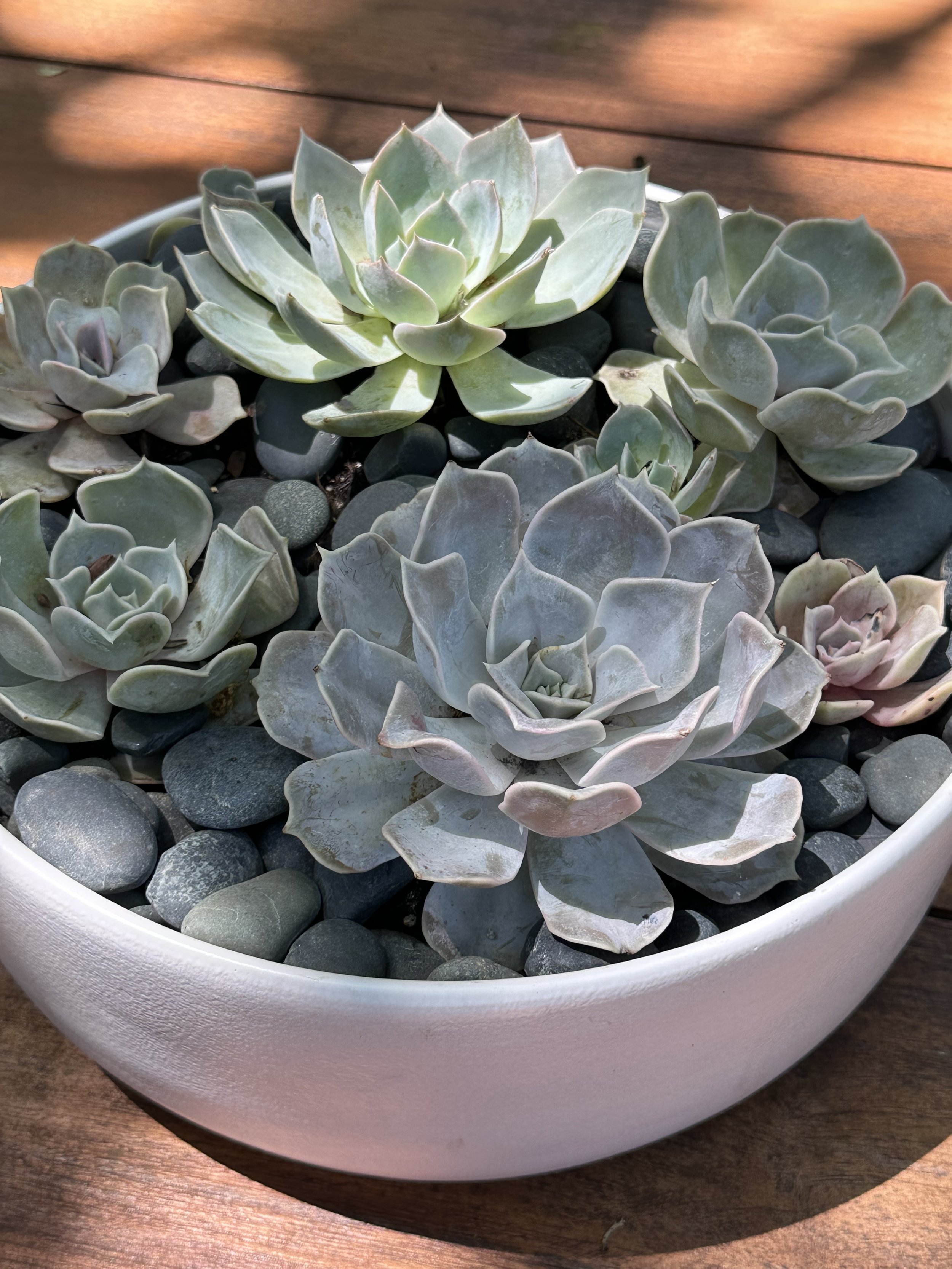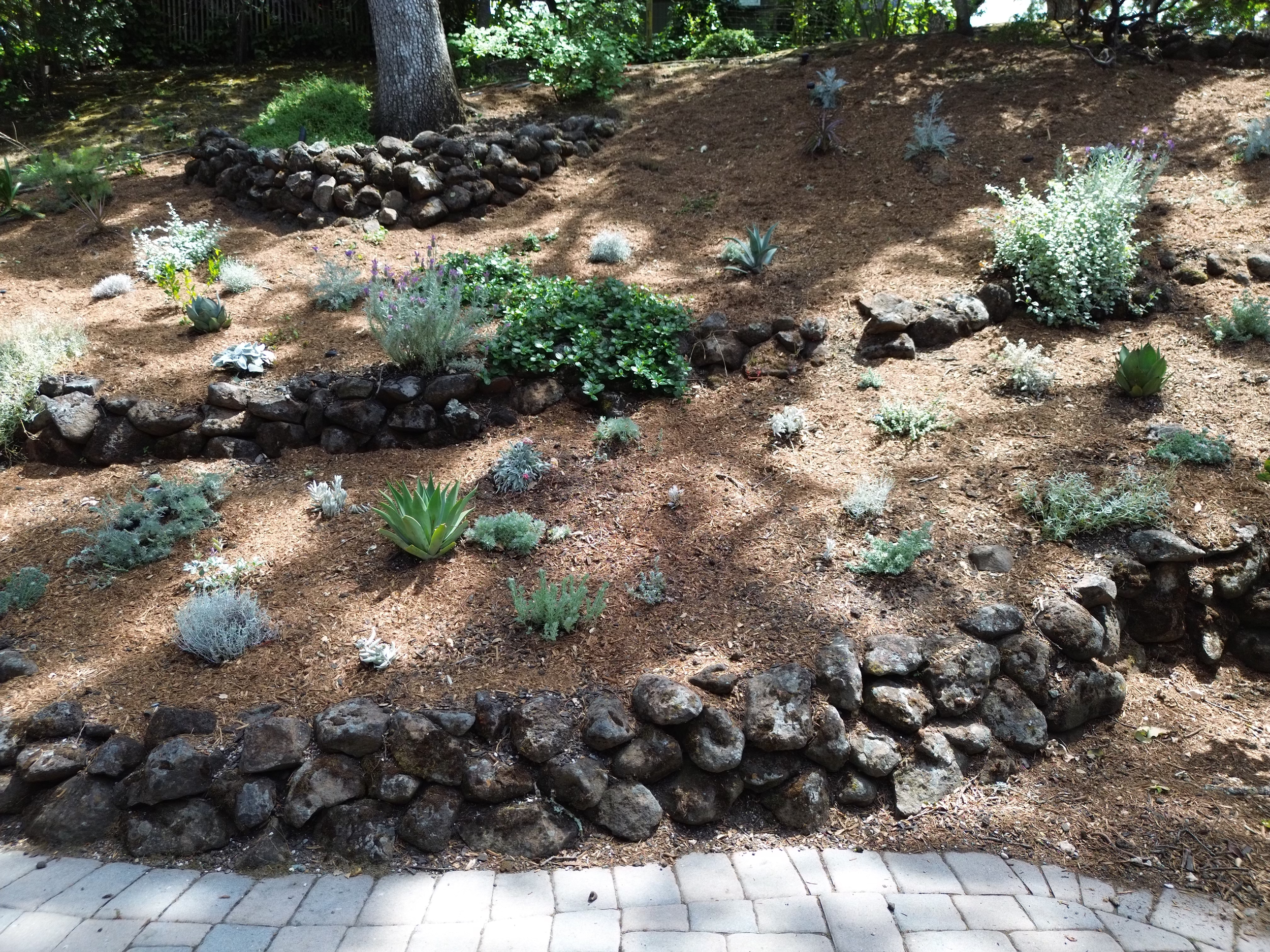Working with a mostly monochromatic palette of silver, white and frosty blues, punctuated by deep burgundy and black, I created a curated modern design with the existing established trees and shrubs. New addition highlights include a variety of serene cool hues in the form of Agave, Artemisia, Kalanchoe, and Senecio, among other rare beauties. Progress photos follow. Many more to come as these beautiful things grow… words continued after the photos.
Lafayette, California, Zone 9b
Plants: Agavaceae, Anacardiaceae, Asteraceae, Asparagaceae, Berberidaceae, Cactaceae, Carylophyllaceae, Compositae, Convolvulaceae, Crassulaceae, Cupressaceae, Ericaceae, Fagaceae, Geraniaceae, Grossulariaceae, Iridaceae, Lamiaceae, Liliaceae, Malvaceae, Myrtaceae, Onocleaceae, Poaceae, Pittisporaceae, Proteaceae, Sapindaceae, Scrophulariaceae, Sterculiaceae…


























After a decade of experimental (and limited) landscaping at rented houses, I’d gratefully been presented with the opportunity to go deeper. Before moving into a newly purchased home, there were plants to be transplanted. The plants were moved before the furniture. I selfishly dug up a Leucadendron argenteum I had planted at our last Eichler home and brought it with me… only to confirm that they, in fact, do not like having their roots disturbed. I popped in some Aeoniums I’d brought along with me and started daydreaming about how I could make this space beautiful for myself and my family.
At first, it was completely freestyle. I climbed the steeply sloped hillside to dig where I could—where the drought-hardened land allowed me to plant anew. It was hard work. I did most of it on my own. I sought to preserve and revive what should be saved: decades old Japanese Maples, 20-foot Camellia trees (one eventually removed, another soon to follow, but I promise to keep one), Rhododendron, native Ceanothus, Flannel Bush, Manzanita, Flowering Currants, and Pacific Coast Irises, under a canopy of twisted, beautiful, heritage, moss-covered oak trees.
The soil softened from winter rains, I removed non-native invasive species, and amendments made the land more hospitable. I spent a few years studying landscape design while simultaneously using my yard as a gardening lab. First priority was to modernize and adapt the landscape to the current climate. Hardscaping remained as is, with some gentle DIY repairs, as needed. Although four years in, I am definitely pondering how amazing it would be to have ORCA Brick Clay Pavers. Maybe someday in the not-so distant future … For now, I’m focused on enjoying my amazing space, making it my own, repairing irrigation, planting things I love, nurturing the plants and the soil. I love our existing fence but painted it black (way bigger job / time suck than I anticipated but 100 percent worth it). A non-functional and inconsistent dry creek across the front hillside was a couple of days work for me to repurpose the rocks and place them under the entryway deck. I’ve done so much and never shy away from tackling something else but at some point I’ll have to call in some favors from my new hardscaping connections. New driveway is on the to-do list.
There is always something… but I am grateful to have this space and it inspired me to make a career change. The coolest part about being a landscape designer is having so many ideas for palettes + spaces and being able to do all of them eventually/hopefully in some form. The spaces outside our homes are extensions of our interior spaces. Living in California amplifies this idea.


